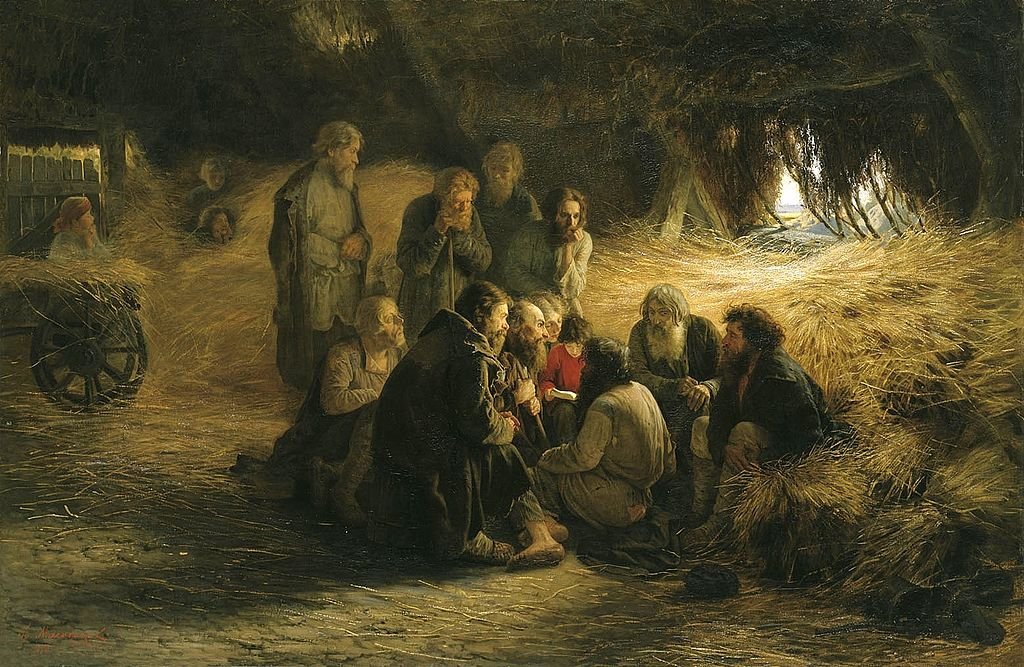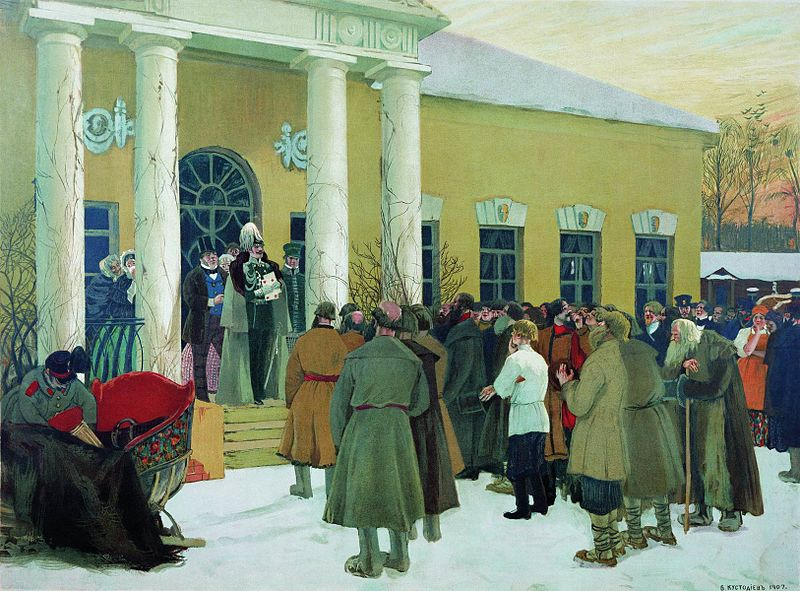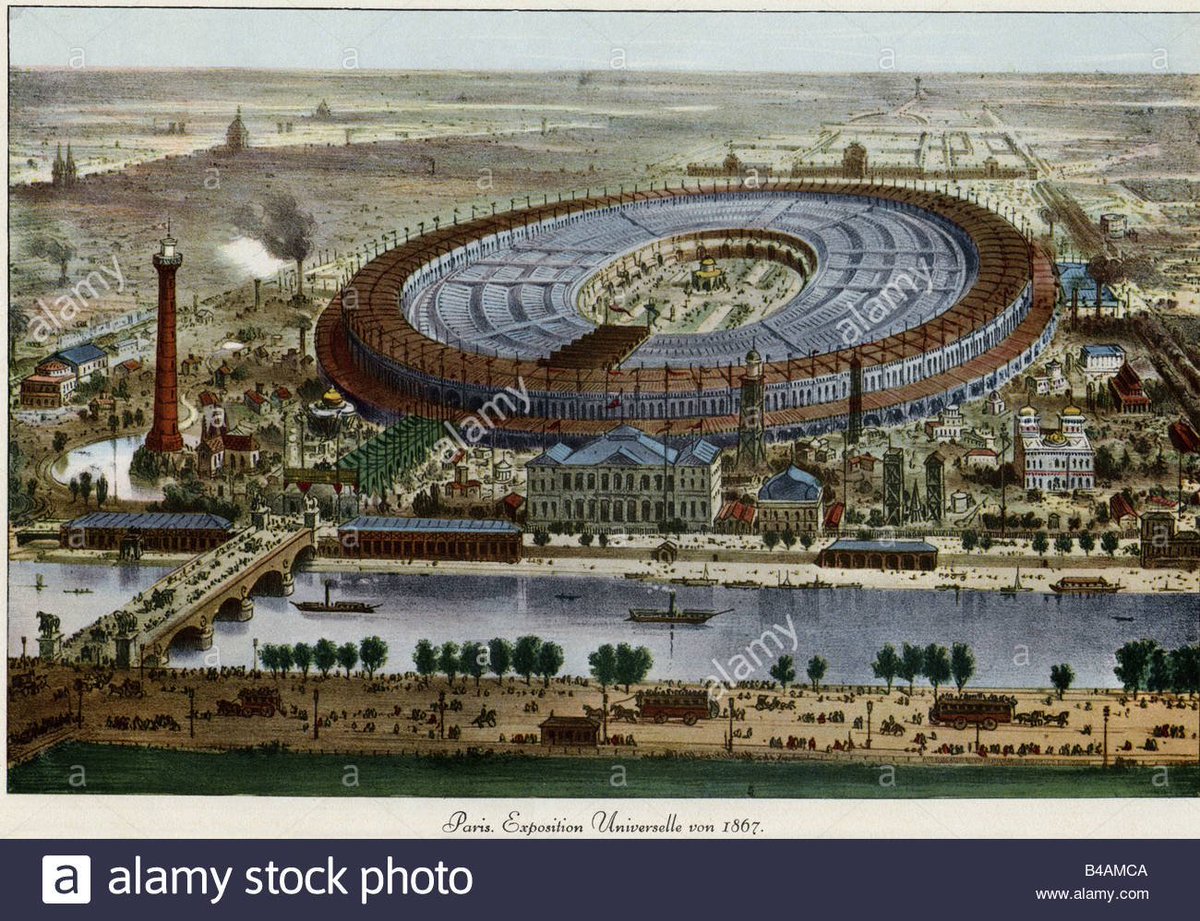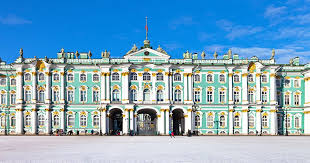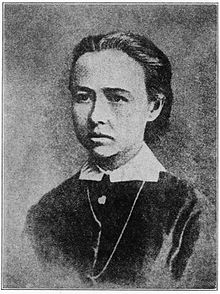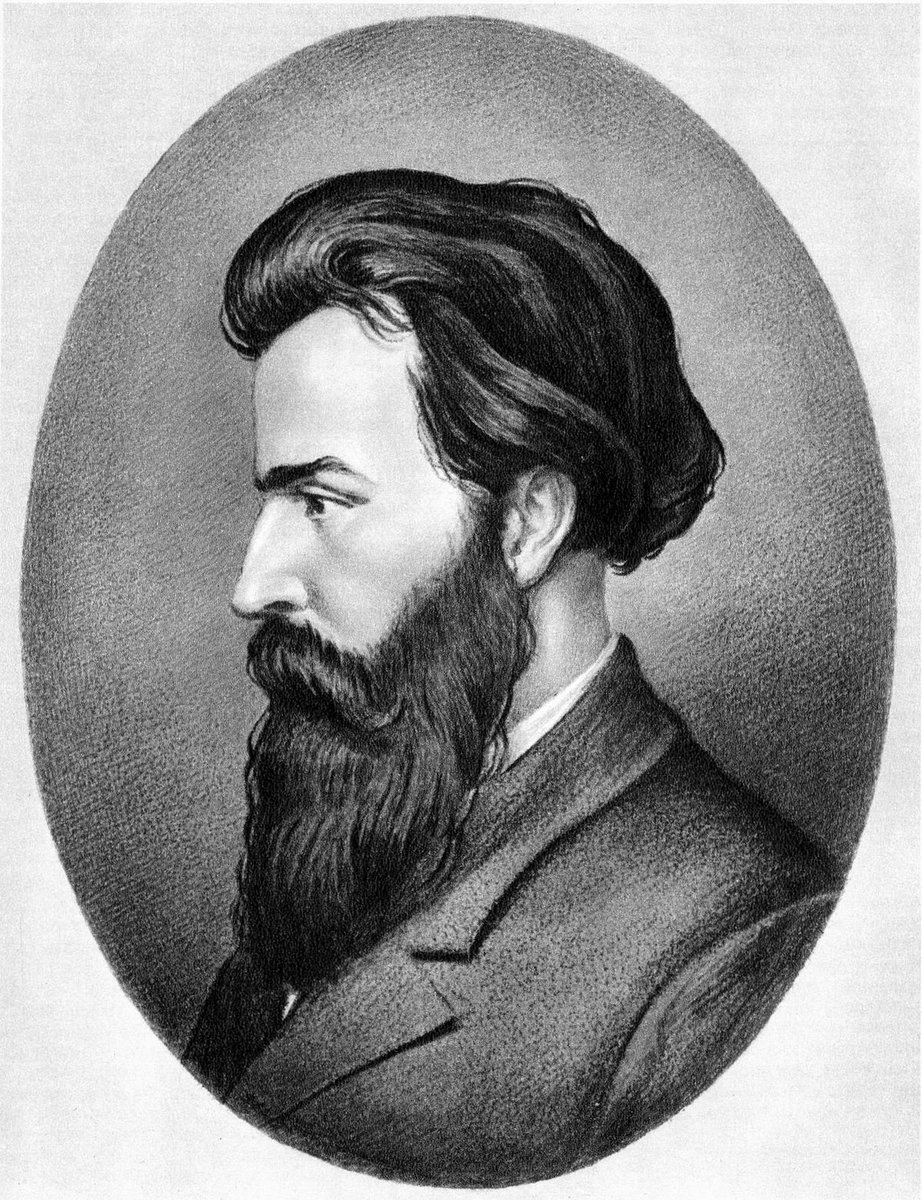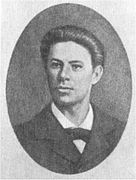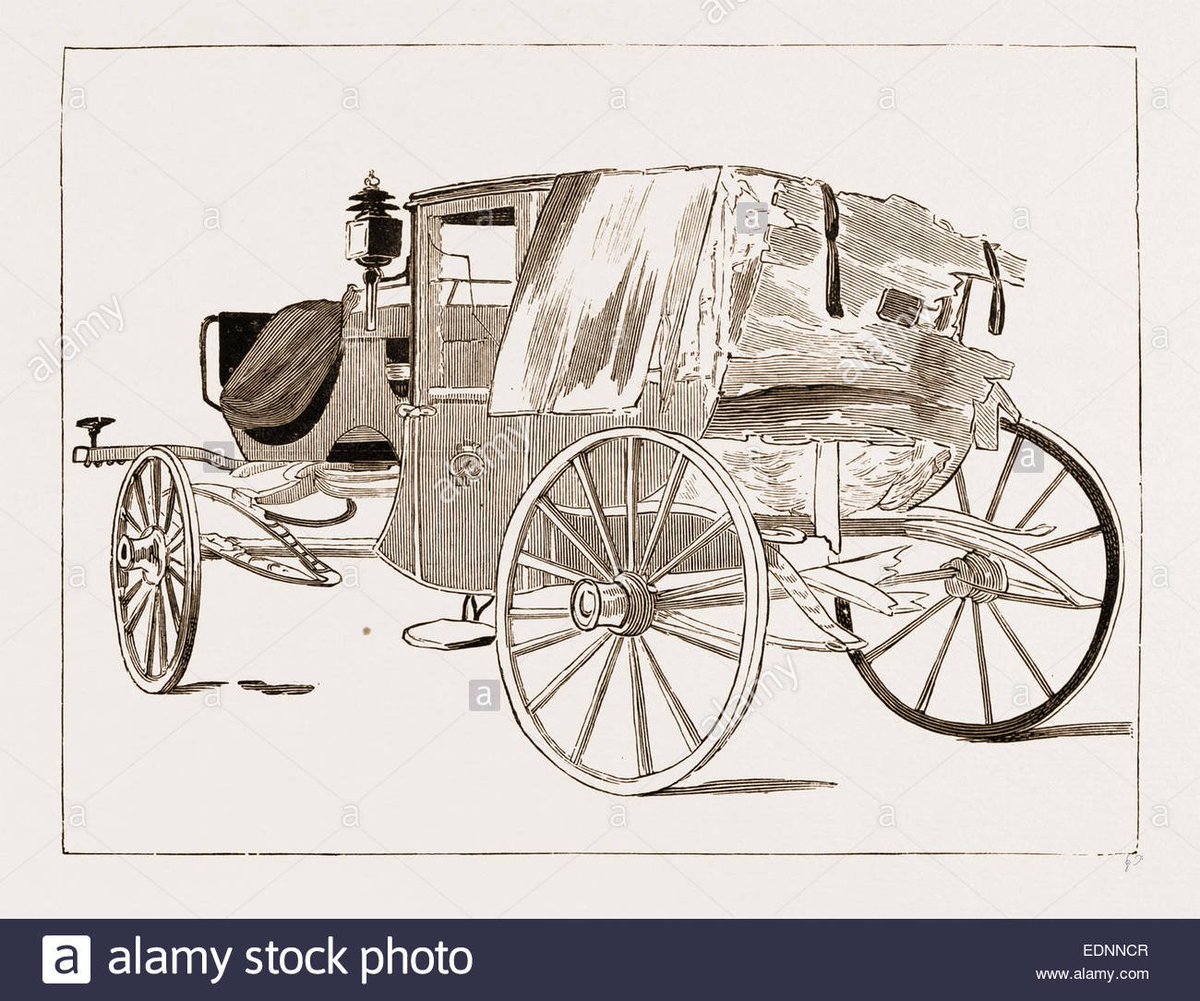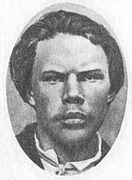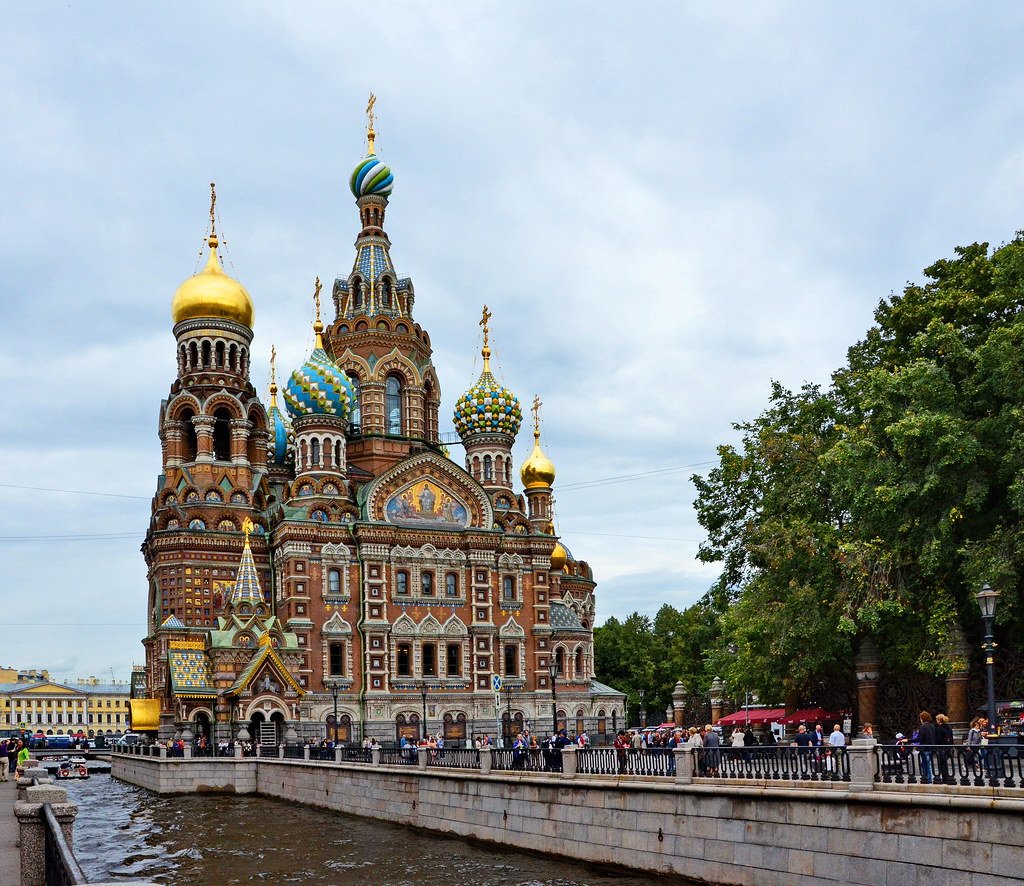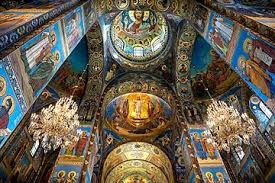The Church of the Savior on Blood was built by Tsar Alexander III to mark the memory of his father, Alexander II.
The & #39;blood& #39; in its name indicates that the church was built at the spot where Alexander II& #39;s blood was spilled, in the last assassination attempt. #Thread https://twitter.com/margaritaevna95/status/1276693720344211456">https://twitter.com/margarita...
The & #39;blood& #39; in its name indicates that the church was built at the spot where Alexander II& #39;s blood was spilled, in the last assassination attempt. #Thread https://twitter.com/margaritaevna95/status/1276693720344211456">https://twitter.com/margarita...
Attempts on his life were not new to Alexander II. He had taken charge as the Tsar as Russia was emerging from a humiliating defeat in the Crimean War.
He would have an eventful reign, peppered with reforms, but also several attempts to assassinate him.
5 years after his coronation, Alexander II abolished the longstanding practice of serfdom in the Russian Empire.
5 years after his coronation, Alexander II abolished the longstanding practice of serfdom in the Russian Empire.
With one edict by the Tsar, more than 20 million people were & #39;free& #39;. They no longer needed the permission of their erstwhile Lords to marry, and could own land and a business.
This was followed by reforms to the judiciary. Alexander II created a unified judiciary system in place of all kinds of local courts that had existed.
Alexander II also gave Russia an effective banking system, with a state bank and municipal banks.
After a significant period of time, Russia achieved a budget surplus in 1873.
After a significant period of time, Russia achieved a budget surplus in 1873.
In the initial years of his reign, Alexander II removed the restrictions on the press and brought about what we can perhaps call Glasnost 1.0.
Of course, none of this came without problems in implementation, as is always the case with changing the status quo.
But that does not deny the farsightedness of some of his reforms.
But that does not deny the farsightedness of some of his reforms.
Emancipation of the Serfs, especially was an extremely radical move, immortalised in paintings.
A young boy reading the Emancipation Manifesto to the older peasants - Grigory Myasoyedov
A young boy reading the Emancipation Manifesto to the older peasants - Grigory Myasoyedov
Despite this, there were several dissatisfied with the Tsar& #39;s reign. And therefore, several attempts on his life.
The first was in 1866, by Dmitry Karakozov, to shoot him as he stepped out of the Summer Garden in St. Petersburg.
The first was in 1866, by Dmitry Karakozov, to shoot him as he stepped out of the Summer Garden in St. Petersburg.
But the attempt was unsuccessful as Karakozov was shoved in the elbow by a member of the crowd present there.
(This person, Ossip Komissarov, would later be given an allowance by the State.)
(This person, Ossip Komissarov, would later be given an allowance by the State.)
The 2nd and more daring attempt would be in Paris, during the Exposition Universelle of 1867.
Antoni Berezowski of Poland (which was ruled by Russia at that time) would attempt to fire at a carriage.
Antoni Berezowski of Poland (which was ruled by Russia at that time) would attempt to fire at a carriage.
The carriage had not just Alexander II, but also his sons, as well as Napoleon III (the last King of France)
Fortunately for them, Berezowski& #39;s gun would misfire hitting the horse of an escort cavalryman.
Too bad for the horse though.
Fortunately for them, Berezowski& #39;s gun would misfire hitting the horse of an escort cavalryman.
Too bad for the horse though.
The third attempt would come on the Tsar& #39;s own palace grounds, as he was taking a walk.
But thanks to his reflexes, the Tsar spotted the gun in the hands of Alexander Soloviev and fled the scene, supposedly in a zig-zag pattern to avoid being an easy target.
But thanks to his reflexes, the Tsar spotted the gun in the hands of Alexander Soloviev and fled the scene, supposedly in a zig-zag pattern to avoid being an easy target.
These attempts suppressed the Tsar& #39;s reformist zeal and made him more rigid and authoritarian.
But that did not stop them.
But that did not stop them.
In 1879, a radical revolutionary group called Narodnaya Volya (People& #39;s Will) tried to set off a bomb on a railway line.
But they missed the Tsar& #39;s train.
But they missed the Tsar& #39;s train.
Undeterred, they placed a time bomb under the dining room of the Winter Palace
But this time, the Tsar missed dinner. His nephew (talk about helpful nephews, eh?) arrived late and the Tsar& #39;s family missed dinner and death.
11 guards died though.
But this time, the Tsar missed dinner. His nephew (talk about helpful nephews, eh?) arrived late and the Tsar& #39;s family missed dinner and death.
11 guards died though.
If you have managed to read the story so far, buckle up. We& #39;re getting to the climax.
The last and final assassination attempt on Tsar Alexander II.
The last and final assassination attempt on Tsar Alexander II.
Narodnaya Volya, by now, had come to the conclusion that the Tsar was mighty lucky. After all, he had survived 2 of their own attempts, not to mention attempts by others.
They would leave nothing to chance.
They would leave nothing to chance.
The plan was devised by Andrei Zhelyabov. His wife Sophia Perovskaya would be the first woman in Russia to be sentenced to death for terrorism.
Narodnaya Volya carefully tracked the Tsar& #39;s routine and movements across St. Petersburg.
Every Sunday, the Tsar left the Winter Palace for the Mikhailovsky Manege.
Every Sunday, the Tsar left the Winter Palace for the Mikhailovsky Manege.
At this point in time, the Mikhailovsky Manege was mostly an exhibition hall.
But its history began as a stable to hold elephants that Nadir Shah of Persia (yes, the same one who attacked Delhi in 1739) had gifted to the Russian Tsarina Anna.
But its history began as a stable to hold elephants that Nadir Shah of Persia (yes, the same one who attacked Delhi in 1739) had gifted to the Russian Tsarina Anna.
But we digress.
So, Alexander II would go to the Mikhailovsky Manege from the Winter Palace, every Sunday.
On his way back, he took one of two routes.
So, Alexander II would go to the Mikhailovsky Manege from the Winter Palace, every Sunday.
On his way back, he took one of two routes.
The first and more common possibility was that he took the Malaya Sadovaya Street.
On occasion, he switched to the road by the Catherine Canal (named after Catherine the Great) who increased its depth.
On occasion, he switched to the road by the Catherine Canal (named after Catherine the Great) who increased its depth.
Knowing their track record with Alexander II, Narodnaya Volna did not want to take any chances.
So, what was the plan?
So, what was the plan?
It was quite elaborate.
They set up a cheese store on the Malaya Sadovaya Street which the Tsar was likely to take.
And they dug a tunnel under it.
They set up a cheese store on the Malaya Sadovaya Street which the Tsar was likely to take.
And they dug a tunnel under it.
Once the tunnel reached right below the center of the street, they stocked it up with dynamite.
The idea was to light it up as the Tsar& #39;s carriage as it crossed the street.
The idea was to light it up as the Tsar& #39;s carriage as it crossed the street.
But this is Alexander II we& #39;re talking about.
What if the explosion didn& #39;t happen? Or was early or late?
Remember the dinner plan that bombed? (Ok, forgive the pun)
What if the explosion didn& #39;t happen? Or was early or late?
Remember the dinner plan that bombed? (Ok, forgive the pun)
So, Narodnaya Volna decided to station four of their people by the end of the street. If the bomb wasn& #39;t enough, these would zero in on the Tsar and throw smaller bombs at him.
But what if that failed too?
But what if that failed too?
Well, Zhelyabov (remember the guy?) decided that he would personally walk in and stab/shoot the Tsar.
These best-laid plans didn& #39;t begin well. Two days before the planned attack, Zhelyabov was arrested.
His wife Sophia took charge.
His wife Sophia took charge.
It was decided that Plan A (of the dynamite and bomb throwers) would happen if the Tsar came through Malaya Sadovaya.
In the odd event that he took the road by Catherine Canal, the bomb throwers alone would have to finish the job.
In the odd event that he took the road by Catherine Canal, the bomb throwers alone would have to finish the job.
The backup of the backup (you need those with a guy like Alexander II) was Ivan Yemelyanov holding a suitcase with a bomb in it.
Now, that& #39;s the plan.
The destined day arrived. The Tsar, oblivious to what awaited him, left from the Winter Palace to the Mikhailovsky Manege.
The destined day arrived. The Tsar, oblivious to what awaited him, left from the Winter Palace to the Mikhailovsky Manege.
On his way back, his carriage took the Bolshaya Italianskaya Street, instead of the Malaya Sadovaya Street.
Plan A of the dynamite: Fail
Plan A of the dynamite: Fail
Sophia Perovskaya was not one to quit so easy.
She immediately took out her handkerchief and sneezed, signaling to the bombers who moved towards the Catherine Canal, ready to attack the carriage as it came by.
She immediately took out her handkerchief and sneezed, signaling to the bombers who moved towards the Catherine Canal, ready to attack the carriage as it came by.
This is where the Tsar& #39;s luck begins to run out.
Instead of heading back to the Winter Palace, he decided to stop by and meet his cousin.
This gave the bombers plenty of time to position themselves near Catherine Canal.
Instead of heading back to the Winter Palace, he decided to stop by and meet his cousin.
This gave the bombers plenty of time to position themselves near Catherine Canal.
As the Tsar& #39;s carriage entered the road, one of the bombers threw the hand bomb under the carriage.
It rolled a little further past and exploded, killing one of the Tsar& #39;s guard.
It rolled a little further past and exploded, killing one of the Tsar& #39;s guard.
Even if it had exploded right below the Tsar& #39;s carriage, it may not have had the desired impact.
Why?
Remember the 2nd assassination attempt, that happened in Paris?
Why?
Remember the 2nd assassination attempt, that happened in Paris?
After that, Napoleon III, recognising the threat to the Tsar& #39;s life, had gifted him a bulletproof carriage.
So, the Tsar emerged after the explosion, rattled but unharmed.
So, the Tsar emerged after the explosion, rattled but unharmed.
The carriage took the brunt of the explosion.
The Tsar is even supposed to have told his people that he was untouched.
The Tsar is even supposed to have told his people that he was untouched.
The Police Chief, who was with the Tsar, apprehended the bomber Ryaskov, and offered to take the Tsar back in his sleigh.
Alexander II agreed but wanted to see Ryaskov first.
Alexander II agreed but wanted to see Ryaskov first.
Despite the pleading of the Police Chief, the Tsar stepped on to the road.
The 2nd bomber (remember there were 4?) threw a bomb right beneath the Tsar& #39;s feet.
Perhaps, Alexander II had run out of luck after all.
The 2nd bomber (remember there were 4?) threw a bomb right beneath the Tsar& #39;s feet.
Perhaps, Alexander II had run out of luck after all.
"Help!" cried the Tsar, weakly.
He was put on the sleigh and taken to the Winter Palace where he soon succumbed to his wounds.
He was put on the sleigh and taken to the Winter Palace where he soon succumbed to his wounds.
Oddly enough, just that morning, he had agreed to have the proposed constitutional reforms of Count Loris Melikov discussed by the Council of Ministers.
His death and the succession of his son Alexander III put an end to this modest step.
His death and the succession of his son Alexander III put an end to this modest step.
But coming back to where we started, Alexander III built the Church of the Savior on Blood at the spot where his father& #39;s blood had been spilt.
Here& #39;s the Church with the Catherine Canal to its side.
Here& #39;s the Church with the Catherine Canal to its side.
Time changes all things.
The Catherine Canal was renamed after the Russian playwright and diplomat, Alexander Griboyedov.
The Church? it served various functions during the Russian Revolution, the 2nd World War and post-war era.
The Catherine Canal was renamed after the Russian playwright and diplomat, Alexander Griboyedov.
The Church? it served various functions during the Russian Revolution, the 2nd World War and post-war era.
Some say it was even a warehouse to store vegetables in the days of the Soviet Union.
Later, it was handed over to the administration of the St. Isaac& #39;s Cathedral located nearby.
Later, it was handed over to the administration of the St. Isaac& #39;s Cathedral located nearby.
So, the grand murals and mosaics you see in the Church of the Savior on Blood, come to us, thanks to extensive restoration efforts carried out over 3 decades.
P.S. Remember that sale of Alaska by Russia to the US for $7.2 million? That was also done by Alexander II.
Thank you for reading.
@threadreaderapp Please compile.
Thank you for reading.
@threadreaderapp Please compile.

 Read on Twitter
Read on Twitter